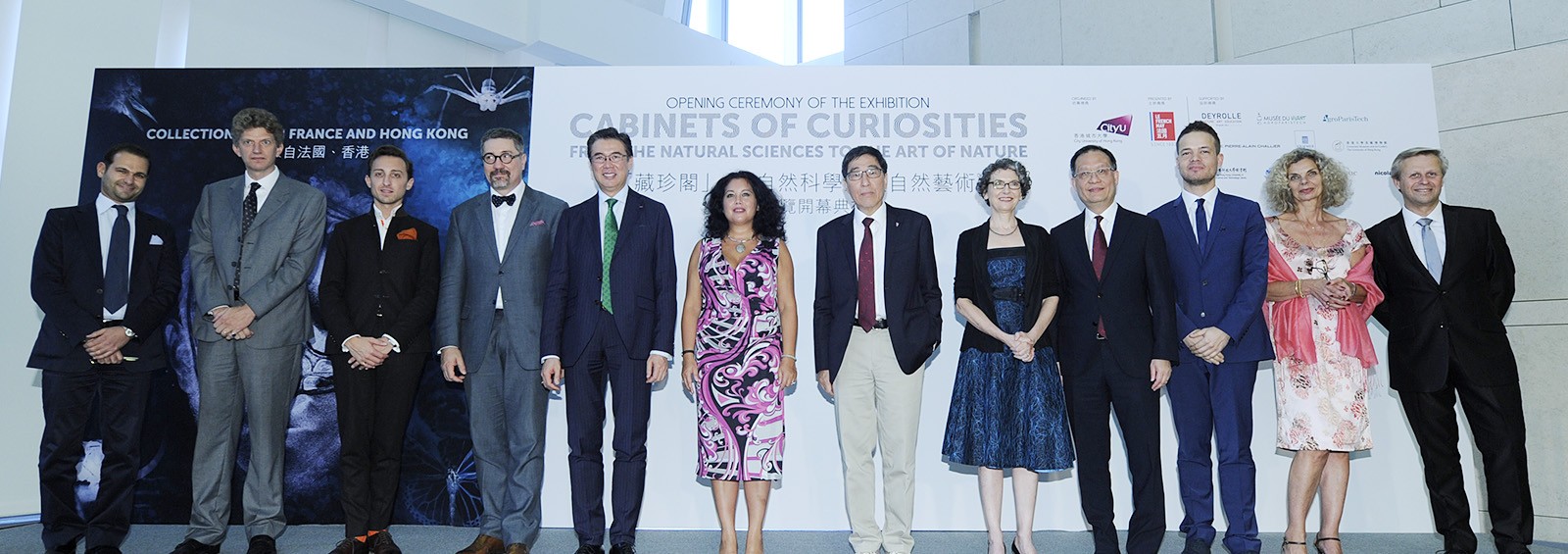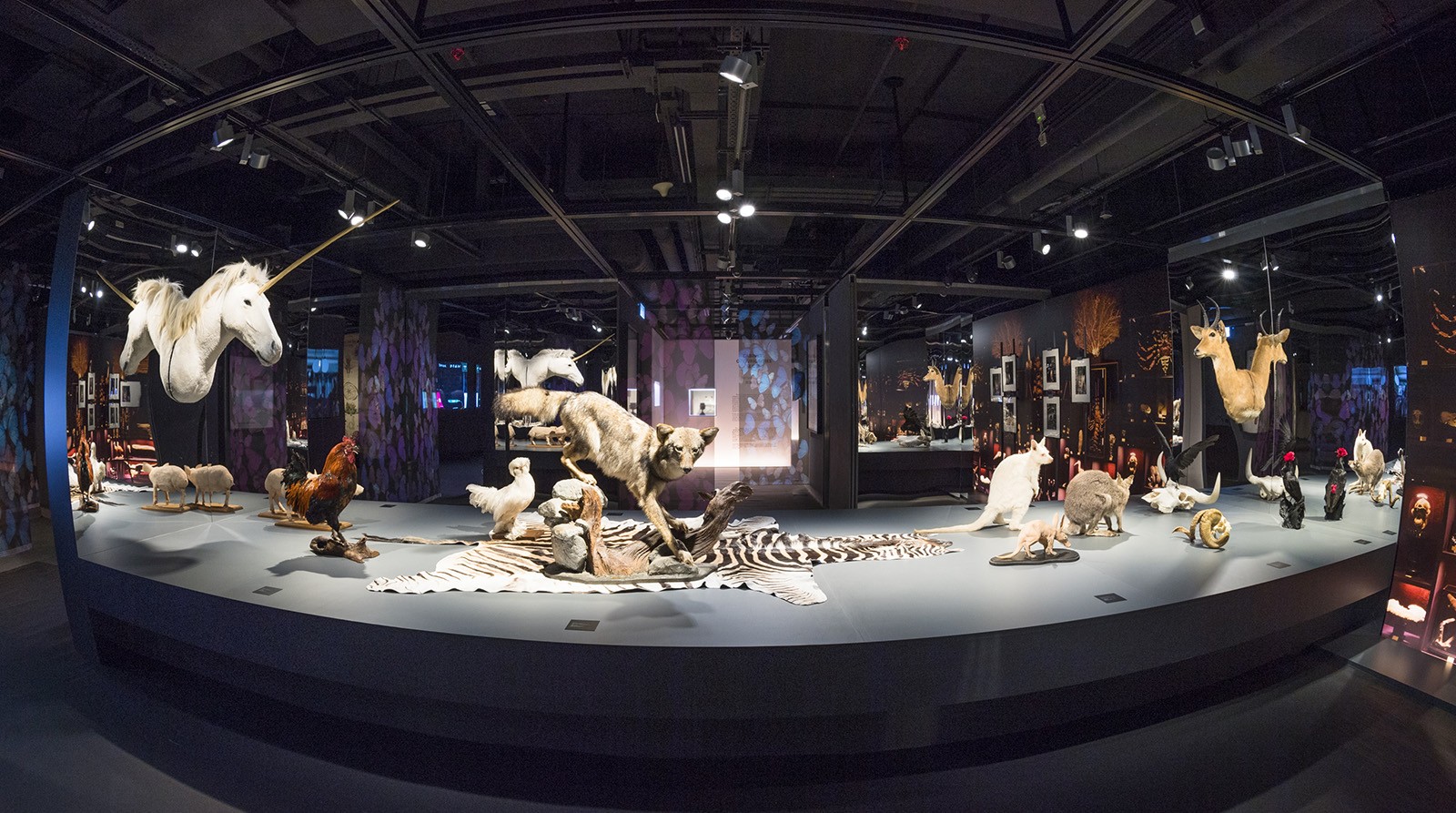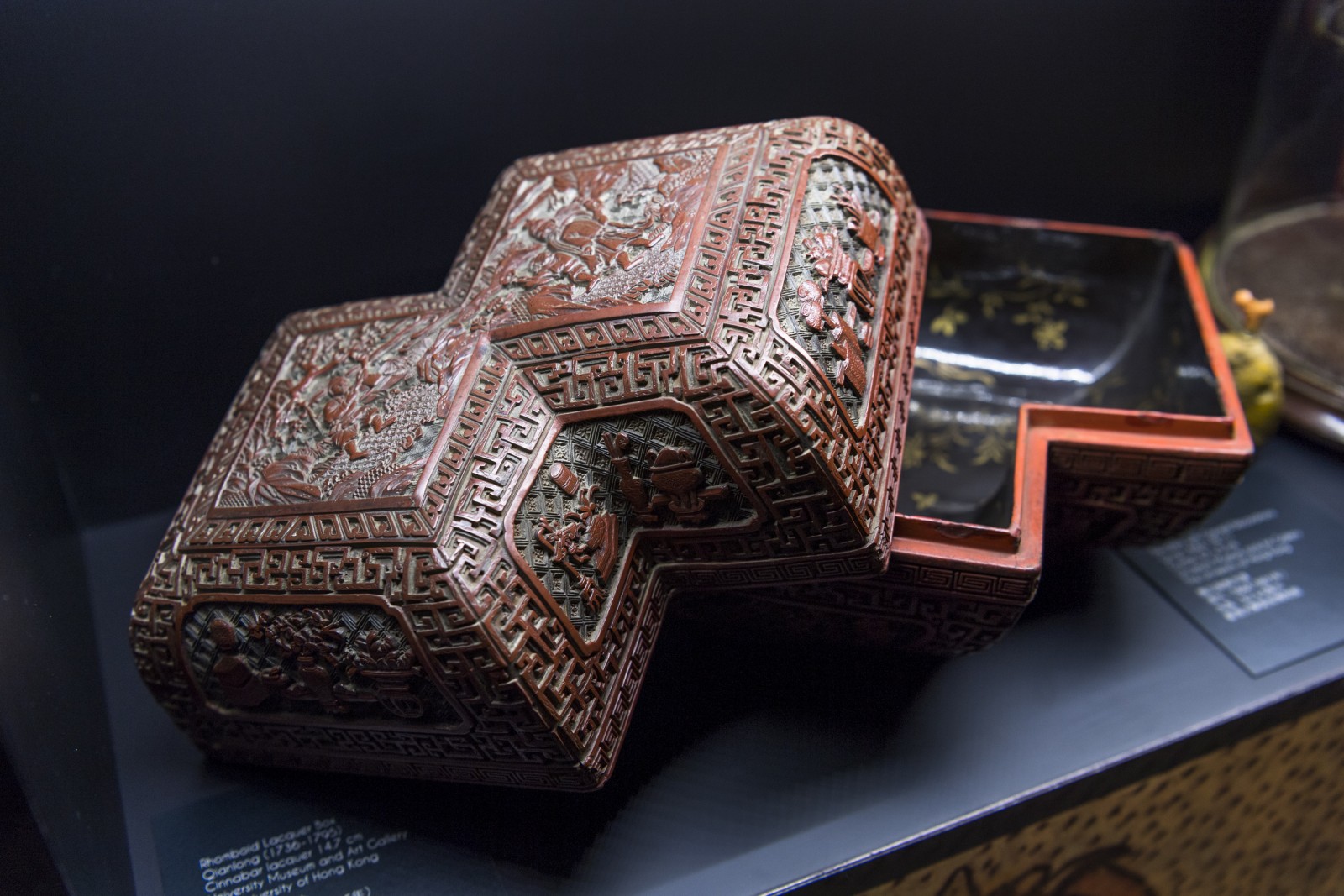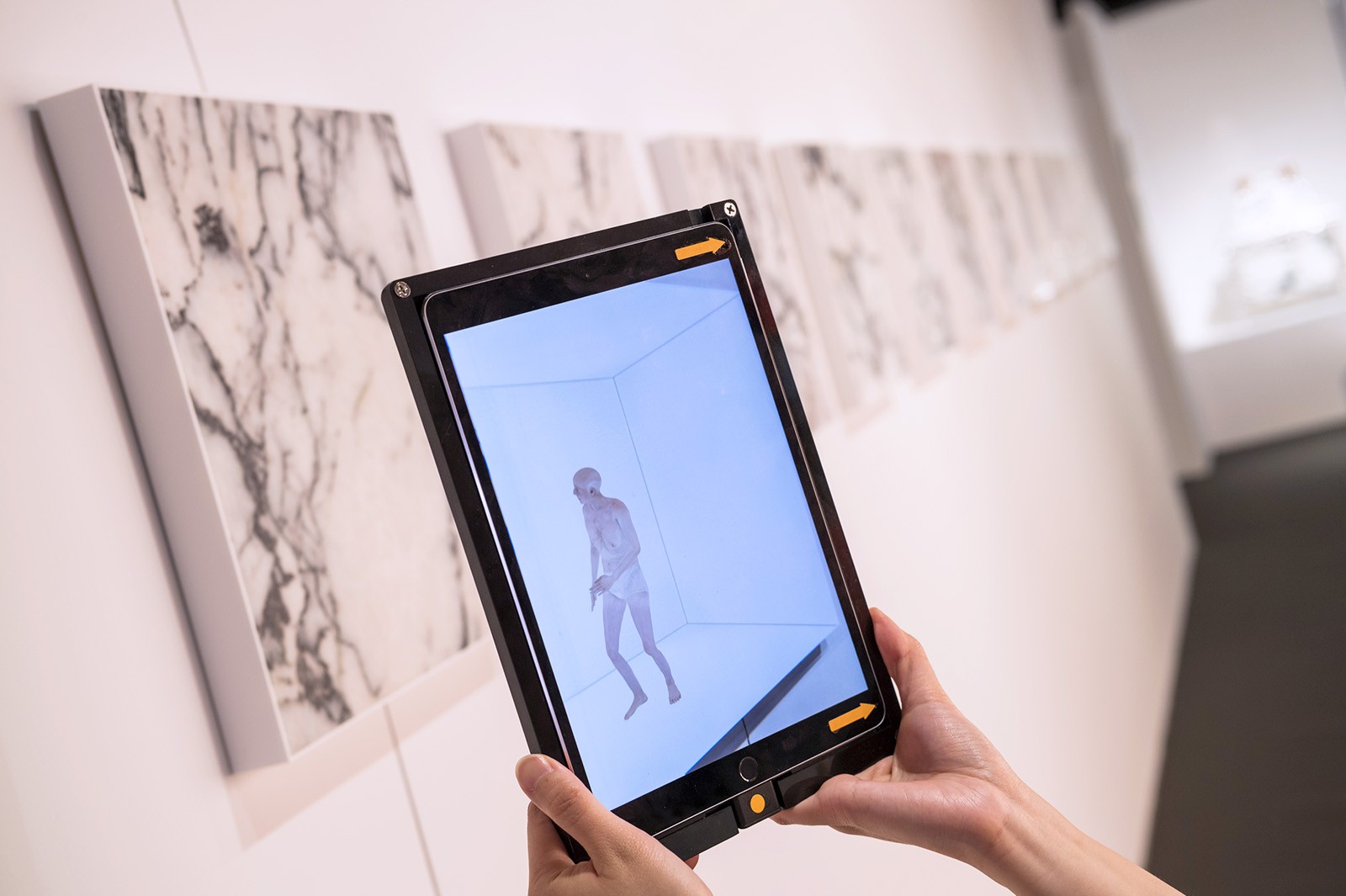Travel through time at “Cabinets of Curiosities” exhibition
Catherine Law
A journey through time and space is presented at a fascinating new exhibition at City University of Hong Kong (CityU).
The displays reveal European collectors’ fascination with exotic animals, plants, minerals and art objects unknown in the West until a few hundred years ago.
“The Cabinets of Curiosities. From the Natural Sciences to the Art of Nature. Collections from France and Hong Kong” introduces Hong Kong audiences to over 250 natural and artificial artefacts from 10 museums, galleries and private collections.
CityU can exhibit these collections for the first time in Hong Kong thanks to the exceptional generosity of La Maison Deyrolle, founded in 1831 and itself a living repository of the French cabinets, and of the Musée du Vivant–AgroParisTech, whose collections date back to the early 19th century.
Organised in collaboration with Le French May Arts Festival, the exhibition is being held from 25 May to 19 August at CityU Exhibition Gallery (Gallery).
An opening ceremony on 24 May was officiated by Ms Paule Ignatio, Deputy Consul General of France in Hong Kong and Macau; Professor Way Kuo, CityU President; Dr Andrew Yuen, Chairman of the Board, Le French May; and Dr Isabelle Frank, Chief Curator and Director of the Gallery.
“I am very proud that CityU has had the opportunity to work once again with Le French May to produce an exhibition of outstanding cultural and social significance,” said Professor Kuo. “‘Cabinets of Curiosities’ enabled communities on one side of the globe to learn about other cultures, ethnicities, wildlife and plants thousands of miles away.”
Ms Ignatio thanked CityU for bringing such an inspiring exhibition to Hong Kong. “This exhibition introduces Hong Kong audiences to a fascinating universe. It allows us to understand more about the strangeness and foreign culture of the past centuries,” she said.
“Cabinets of Curiosities” were the predecessors of museums. They were actual cabinets or small studies in which rulers and wealthy owners stored precious religious, royal and other valuable items as well as unusual specimens from the natural world.
Such artefacts were brought back to Europe during 16th, 17th and 18th centuries by ocean-going expeditions intent on exploring the “new” continents of Asia, the Americas, Africa and Oceania. Their beauty, strangeness, and rarity invested these objects with great value and their owners displayed them as “curios” in richly decorated cabinets to the delight of their guests.
Collectors sought to recreate a microcosm of the universe in these cabinets. They amassed natural plant and animal specimens, acquired mechanical devices and rare artistic objects, and purchased foreign artefacts.
“These cabinets were also the site of serious scholarly and scientific investigations that were published in encyclopaedias, histories and collection catalogues,” said Dr Frank. “There the study of nature went hand-in-hand with the study of the arts and letters. These early scholars and scientists laid the foundations for what later became the academic disciplines of the social and natural sciences.”
The cabinets exerted a spell well into the last century with artists such as Salvador Dali, Giorgio de Chirico, Man Ray and Jean Cocteau, whose pieces appear in the exhibition, exploring the relationship between human and natural creations in all their forms. Similarly, the works of more contemporary artists, from Damien Hirst to Jean-Michel Othoniel and Professor Jeffrey Shaw, Chair Professor of CityU’s School of Creative Media, are themselves curios or even miniature cabinets.
The exhibition is divided into five sections: (i) Cabinets of Curiosities – a Brief History; (ii) Maritime Expeditions and the Collecting of Exotica; (iii) The Musée du Vivant–AgroParisTech: From Amateur Collections to Discoveries in the Natural Sciences; (iv) The Maison Deyrolle Cabinet of Curiosities: Nature Art Education and (v) Cabinets of Curiosities and Contemporary Art.



